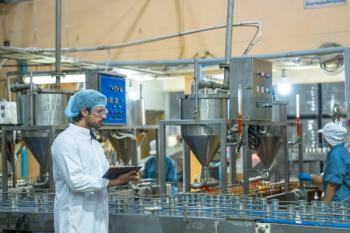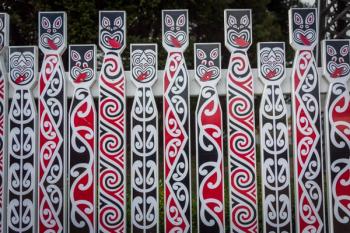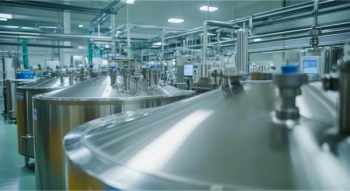
Horiba Launches Spectrometer Designed for Water Research and Environmental Monitoring
Key Takeaways
- The Aqualog-Next combines speed, precision, and advanced data processing to tackle water-related challenges, integrating with EzSpec software for streamlined workflows and data integrity.
- Analysts can perform data acquisition, processing, and reporting, with features like inner-filter effect correction and 3D-to-2D profiling, enhancing result accuracy and data sharing.
In a recent press release, Horiba, an analytical and measurement technology company, announced the release of its Aqualog-Next A-TEEM Spectrometer.
In a recent press release, Horiba, an analytical and measurement technology company, announced the release of its Aqualog-Next A-TEEM Spectrometer. This spectrometer is the fifth generation of its flagship Aqualog platform, and it is designed to aid analysts who work in water research and environmental analysis (1).
According to Horiba, this new iteration of the Aqualog platform combines speed, precision, and advanced data processing tools. It gives scientists a solution for tackling pressing water-related challenges such as climate change, harmful algal blooms, and drinking water safety (1). This new spectrometer is also integrated with EzSpec software, which is designed to streamline workflows and safeguard data integrity (1).
What does the platform allow analysts to do?
Analysts can use the platform for data acquisition, processing, and reporting. It also allows for database integration for easy filtering and searching of data files (1). The platform also contains additional features, such as inner-filter effect correction, Rayleigh masking, RSU normalization, and three-dimensional (3D)-to-two-dimensional (2D) profiling, which gives researchers expanded capabilities for producing accurate results (1). And finally, data sharing is made easier. Analysts have the ability to export the results in two file formats (ASCII and PDF) (1).
What is Horiba’s patented A-TEEM Technology?
The Aqualog-Next employs Horiba’s patented A-TEEM technology, which simultaneously acquires absorbance and fluorescence excitation-emission matrices (EEMs). This dual-function design allows the instrument to generate molecular fingerprints of samples in seconds using an ultra-fast CCD detector (1). According to the company, this allows the Aqualog-Next device to improve on traditional scanning photomultiplier tube (PMT) fluorometers (1). By capturing both absorbance and fluorescence data simultaneously, the system addresses a longstanding challenge in fluorescence spectroscopy, which is to correct for inner filter effect (IFE) distortions to deliver more reliable measurements (1).
Horiba’s new platform was designed to be capable to operate in many areas of water science and environmental monitoring. Some of those applications include climate change and natural organic matter (NOM) analysis, harmful algal bloom monitoring, drinking water compliance, membrane fouling research, and petroleum and oil spill detection (1). These diverse applications highlight the instrument’s role not only in academic research but also in regulatory compliance, industrial water management, and environmental protection.
How does the Aqualog-Next support modern research needs?
The Aqualog-Next is designed to support modern research needs by providing National Institute of Standards and Technology (NIST) traceability, ensuring compatibility with standard reference materials (1). It also offers support for multivariate analysis methods, including parallel factor analysis (PARAFAC), principal component analysis (PCA), and partial least squares (PLS) models, making it an adaptable tool for decomposition, classification, and regression analysis (1).
Cary Davies, Global Product Line Manager for HORIBA’s Fluorescence Division, emphasized the importance of the new spectrometer for global water research.
“The Aqualog-Next revolutionizes water research by delivering rapid, high-resolution A-TEEM molecular fingerprints so that scientists can make faster, more informed decisions about water quality, environmental impact and water treatment efficiency,” Davies said, in a press release. “This will ultimately accelerate innovation in water science and sustainability.”
Founded in 1953, Horiba operates 47 group companies across 28 countries and regions, applying its expertise in measurement and analysis to fields as diverse as energy and environment, biology and healthcare, and materials and semiconductors (2). The launch of the Aqualog-Next reflects the company’s continued commitment to providing innovative technologies that address global sustainability challenges (1,2).
With water quality and climate issues becoming increasingly urgent, Horiba’s latest innovation equips researchers and policymakers with the tools to better monitor, understand, and protect the world’s most vital resource (1).
References
- Horiba, Aqualog®-Next: The Future of Water Analysis is Here. Horiba. Available at:
https://www.horiba.com/int/products/detail/action/show/Product/aqualog-next-6823/ (accessed 2025-08-26). - Horiba, History of Horiba. Horiba. Available at:
https://www.horiba.com/int/company/about-horiba/history/1945-1960s/ (accessed 2025-08-26).
Newsletter
Get essential updates on the latest spectroscopy technologies, regulatory standards, and best practices—subscribe today to Spectroscopy.





